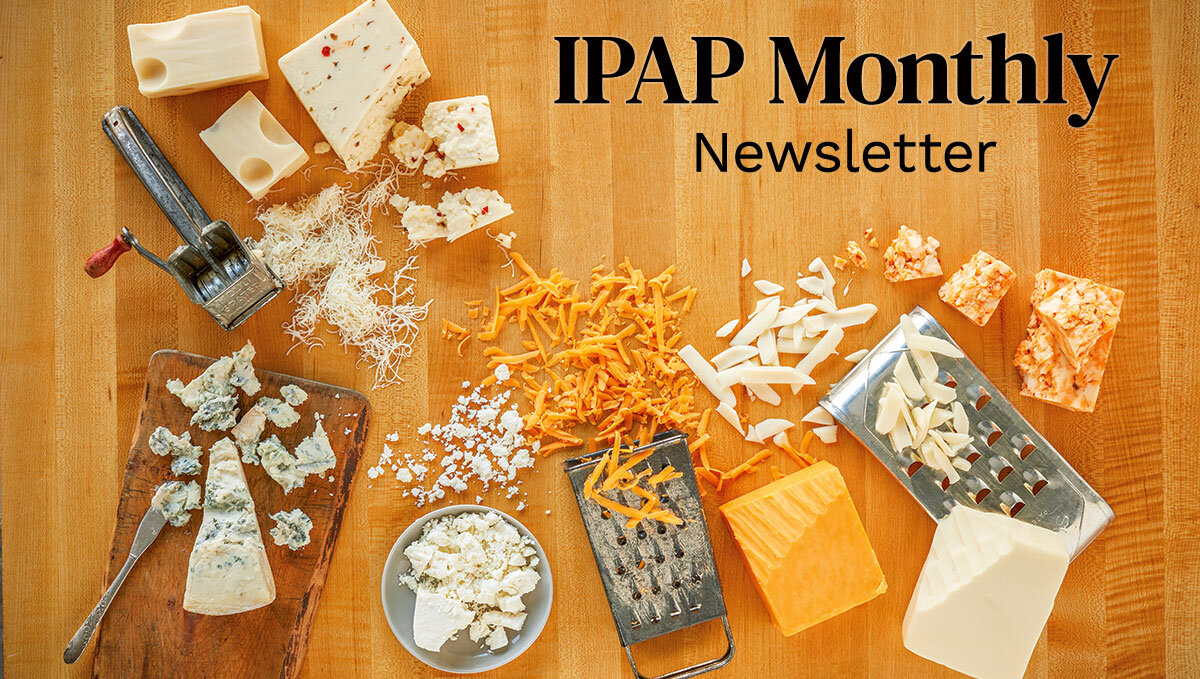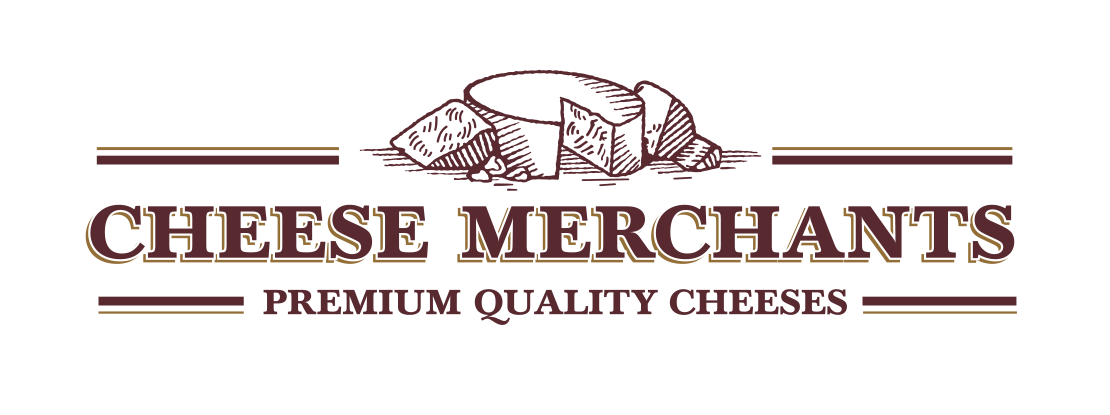

Summer is officially upon us, which means we’re outside enjoying meals under the warm sun.

Fresh fruits and vegetables are popular now for grilling and mixing into salads. Did you know grated cotija cheese makes a delicious topper to many seasonal dishes? Originating in southern Mexico, this crumbly cheese bears similarities to Italian Parmesan, but cotija’s sharp taste is stronger and saltier.

Cheese Merchants brings this distinct flavor from the mountains of Mexico to your backyard picnic table with the new Zacatecas Grated Cotija Cheese line. Sprinkled moderately on kale salad, grilled corn on the cob or watermelon salad, Zacatecas Grated Cotija Cheese infuses just the right amount of salty taste without diminishing the flavor of the main dish.
Zacatecas Grated Cotija Cheese is available through IPAP in 4/5 lb. bags (Item #013766) or 10/2 lb. bags (Item #013767). For more information, contact your Account Manager.
Try Zacatecas Grated Cotija Cheese on the following summer recipes.
Mexican Kale Salad

- 1 bunch kale, sliced into thin ribbons
- 1 avocado, cubed
- 4 medium radishes, thinly sliced
- 1/2 cup Zacatecas Grated Cotija Cheese
- 1/4 cup pepitas
Combine all ingredients into a bowl.
Serve immediately.

Grilled Mexican Street Corn
- 6 ears of corn
- 1 tablespoon olive oil 3 tablespoons butter, softened 2 tablespoons mayo
- 3-4 oz Zacatecas Grated Cotija Cheese
- Fresh cilantro
- Black pepper
Shuck corn and brush each with olive oil and sprinkle with pepper. Wrap in aluminum foil.
Grill for about 5 minutes each “side,” rotating corn 4-5 times during grilling. While grilling corn, combine softened butter with mayo.
Once corn is finished, let sit for about 5 minutes to cool a bit before serving. Brush with butter/mayo blend and roll in Zacatecas Cotija.
Garnish with fresh cilantro.
Watermelon Salad

- 1/2 cup chopped red onion
- 1/2 cup lime juice
- A quarter of a medium sized watermelon, chopped
- 1/2 cup Zacatecas Grated Cotija Cheese
- 1/4 cup fresh mint leaves, thinly sliced
- 1/2 cup fresh parsley leaves, chopped
Soak the chopped red onion in the lime juice while prepping other ingredients.
Combine all ingredients into a bowl.
Serve immediately.

When the coronavirus hit U.S. shores, foodservice companies wisely canceled their in-person tradeshows for the spring 2020 season.
Suppliers and distributors imposed travel bans to protect their workers’ health, not to mention everyone was working overtime to respond to the economic fallout from the crisis. Who had the ability or time to attend a food show?
Three months have passed, and the businesses that weathered the storm are closer to financial stability. That means food shows are making a comeback, albeit in a modified form. More companies than ever are experimenting with online tradeshows to support businesses during a pandemic without putting anyone’s health at risk.
Virtual tradeshows are not new. What is notable is how many companies are suddenly testing the format. If you’re the traveler for your workplace, then chances are your “trips” this summer and fall will take place over an internet connection from your cubicle or at-home office.
Pros and Cons
The virtual food show offers numerous benefits:
- Employees can participate for a few hours from the comfort of their own desk without spending days away from work or tapping into the travel budget.
- Exhibitors skip the labor of shipping food samples and supplies to the venue and setting up show booths. (That said, decorating is still part of a virtual booth. More on that later.)
- Virtual booths provide the visitor one-click access to company websites, contacts, videos, social media channels, point of sale forms, product ordering, wish lists and job postings.
- Vendors receive ROI data points that are impossible to measure at an in-person show. For example, while an exhibitor couldn’t measure how many associates leafed through the booth handouts on the flight home, they can count the clicks for those same materials at a virtual booth. Pageviews may even be broken down by the visitor’s name, allowing for follow-up with potential customers.
That said, several trade-offs come in having a virtual show:
- People cannot strike up a conversation with those physically seated next to them at the lunch table or in the auditorium. These chance encounters generate sales, spread ideas and occasionally lead to lifelong friendships.
- Technological issues like poor internet connections and user inexperience create communication barriers. Fortunately, the platforms hosting the virtual events offer live tech support to troubleshoot problems for end users.
- Attendees miss out on the biggest sensory experience an online food show cannot recreate: the tastings. Unfortunately, there is no high-tech workaround for this. The supplier and the buyer just have to work out a product order.
Same Activities, Different Format
The conversations people expect at a food show still take place; they’re just delivered in a digital format. The buyer roams an exhibition hall (some services offer a first-person view, others a customizable human avatar you guide through the room), stops at a booth, and, if they have a question, asks the vendor via webcam/microphone or instant messenger. Talking aloud offers a more natural communication experience. Exchanging IM’s allows both sides to slow down and think through their responses but also feels impersonal and formal, akin to writing emails.
Virtual booths still serve as the hubs for information and expertise. Appearance-wise, the booths lack tablecloths and centerpieces, but the exhibitors still spruce them up to attract “passerby.” Weeks before the show, the exhibitors upload their images and other relevant information for customers (noted above in the third bullet under Pros and Cons). Quality product photos and company logos are musts to display professionalism. Vendors also write a booth description. Strategic keywords make all the difference as to who stops at the booth, especially if they’re using a search engine. Companies are smart to lean on their marketing team’s expertise in graphic design and SEO when setting up a virtual booth.
Breakout sessions and keynote speakers, typical staples of conferences, transfer seamlessly to an online setting. Brave public speakers can opt to deliver their talks live, like a Zoom call. Those who prefer editing control over their presentation and wish to avoid glitches in front of hundreds of people can upload a recorded talk that people view on demand.
Some foodservice companies insist the virtual show is a short-term solution, a step up from canceling the show but no replacement for face-to-face networking. These companies are eager to welcome everyone back in person soon. Other companies might experience cost savings and higher attendance in the virtual sphere and permanently shift events online. Either way, this season is sure to provide show-goers an experience like no other.

Are you a master of all things cheese and dairy?
This month’s trivia comes straight from one of the news articles in the Dairy Dive (found below the quiz). Read the right story and you may land a perfect score. Answers appear below the Dairy Dive.
1. Why did Brits begin producing cheese in larger sizes in the 1700s?
A) When a famine struck England, the government paid cheesemakers to produce larger amounts to feed their villages.
B) They began shipping product over longer distances, and larger blocks were harder to damage.
C) They started transporting cheese across the Atlantic to the Thirteen Colonies, and oftentimes moldy parts had to be cut off by the time shipments arrived.
2. Which cheese is the top seller in the United States today?
A) American
B) Cream cheese
C) Mozzarella
3. Why didn’t cheese consumption catch on in Colonial India or Kenya?
A) The countries’ populations were largely lactose intolerant and couldn’t eat the smaller variety of cheeses that existed at the time.
B) The English were a minority in these countries, so their love for cheese did not spread to the broader populations.
C) Arid conditions made it difficult to raise cows to produce the milk.
4. A number of cheesemakers are reviving artisanal cheddar’s flavor of past centuries by doing what?
A) Bounding the cheese in cloth
B) Eliminating computerized technology from their plants and returning to older production methods
C) Locating Medieval cheese recipes and translating them to modern English
5. Which country displaced the United States as England’s top cheese supplier?
A) Canada
B) Australia
C) Italy

Recent headlines about cheese, milk and foodservice from around the web.
- Why American farmers are throwing out tons of milk (Vox)
- Cheese prices hit record high just weeks after hitting nearly 20-year lows. Here’s why the price has been so volatile. (Chicago Tribune)
- National Restaurant Association: 75% of restaurant operators don’t expect to turn a profit in near future (Nation’s Restaurant News)
- As Diners Flock to Delivery Apps, Restaurants Fear for Their Future (New York Times)
- Dairy farmers are dumping millions of gallons of milk. This could make it stop (CNN)
- What I Found When My Favorite Local Restaurants Re-Opened (Forbes)
- How A New French Cheese Was Accidentally Created During Lockdown (Forbes)
- Cheddar empire: Rise of a cheese superpower (CNN)
- Old-fashioned milk delivery making a comeback in Pennsylvania (The Morning Call)
- Oat milk, oat cheese, and other oat products have gone from niche alternative to fridge staple — and dairy giants like Chobani are taking notice (Business Insider)
- Eight international cheeses you need to try once (Popular Science)
- This mountainous region of Vietnam produces some of the best cheese in Asia (CNN)
Quiz Time answers
1. Why did Brits begin producing cheese in larger sizes in the 1700s?
B) They began shipping product over longer distances, and larger blocks were harder to damage.
2. Which cheese is the top seller in the United States today?
C) Mozzarella
3. Why didn’t cheese consumption catch on in Colonial India or Kenya?
B) The English were a minority in these countries, so their love for cheese did not spread to the broader populations.
4. A number of cheesemakers are reviving artisanal cheddar’s flavor of past centuries by doing what?
A) Bounding the cheese in cloth
5. Which country displaced the United States as England’s top cheese supplier?
A) Canada
